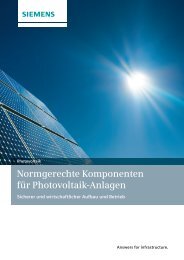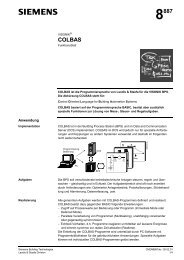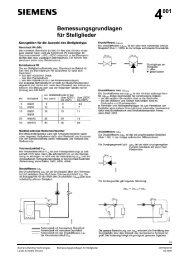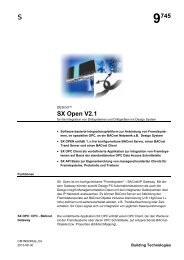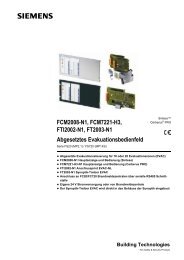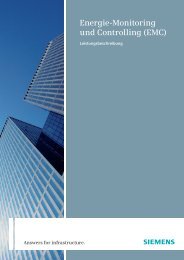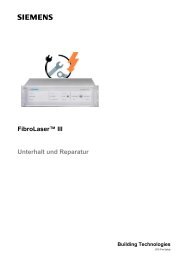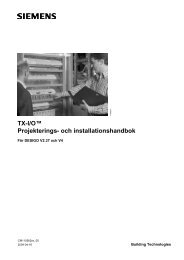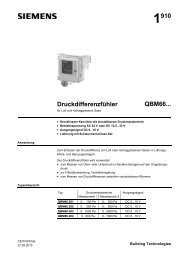Sensor Installation Handbook Preface 3rd edition - Siemens ...
Sensor Installation Handbook Preface 3rd edition - Siemens ...
Sensor Installation Handbook Preface 3rd edition - Siemens ...
Create successful ePaper yourself
Turn your PDF publications into a flip-book with our unique Google optimized e-Paper software.
Humidity<br />
72<br />
Measuring humidity<br />
Humidity is generally measured by use of hygroscopic materials. i.e.<br />
materials which respond to changes in humidity.<br />
Relative humidity (% r.h. = �)<br />
Principle: physical change in length<br />
Textile fibres (cotton, nylon etc.) expand as a function of relative humidity<br />
(producing a deflection).<br />
The deflection can be used as follows:<br />
To move a pointer (hygrometer), to operate a switch (hygrostat), to adjust a<br />
potentiometer, to adjust nozzles/baffles etc. (pneumatics), and to change<br />
inductivity (electrical variable).<br />
Humid air<br />
Insulating plate<br />
Pole<br />
% r.h.<br />
Cotton fibre<br />
Principle: change in electrical capacitance<br />
Capacitive elements respond to relative humi -<br />
dity by changing their electrical charge-storing<br />
capacity. Two electrical poles are connected to<br />
an insulating plate. In conjunction with the<br />
moist air, these poles store the electrical charge.<br />
The charge-storing capacity between the two<br />
poles depends on the ambient humidity.



